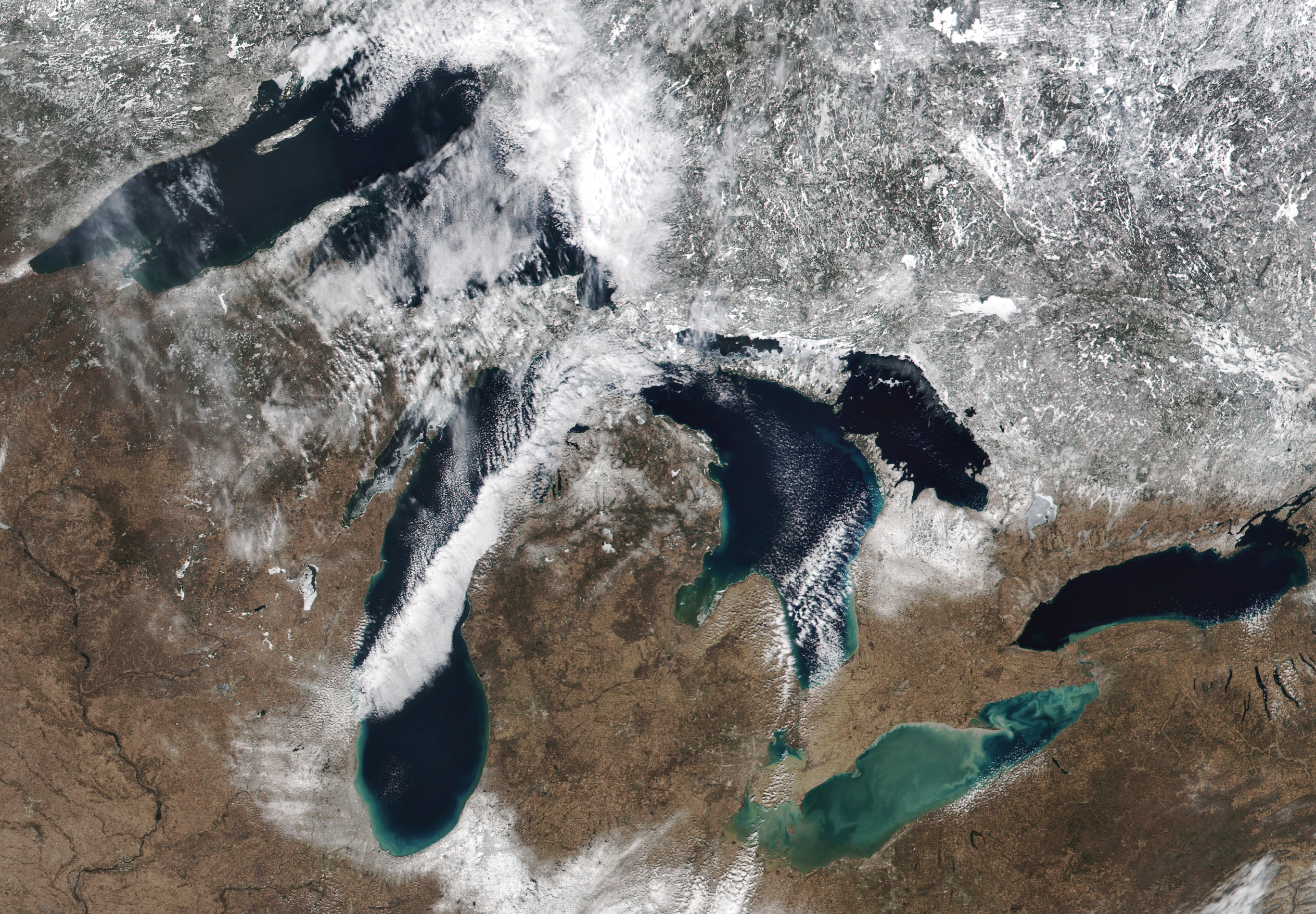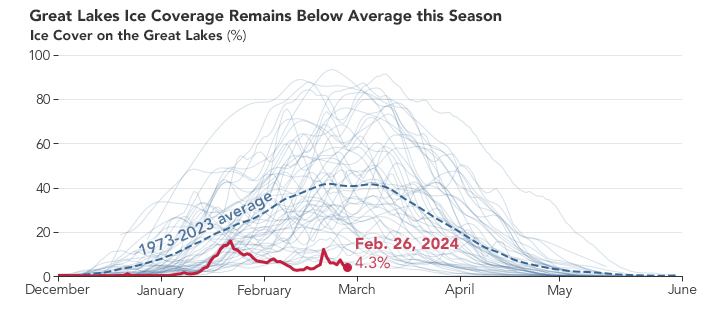New Lows for Great Lakes Ice Cover

February 24, 2024
Ice coverage on the Great Lakes typically reaches its annual peak in late February or early March. But at that time in 2024, the lakes were conspicuously free of ice. Owing to warmer winter weather and above-average
surface water temperatures, ice cover stood at historic lows.
Since satellite-based measurements began in 1973, ice coverage at its maximum winter extent exceeds, on average, 40 percent. In late February 2024, it stood at only about one-tenth of the average maximum. The
VIIRS (Visible Infrared Imaging Radiometer Suite) sensor aboard the
Suomi NPP satellite acquired this image of the lakes on February 24, 2024.
The extent to which the lakes freeze is highly variable. In 2014, for example, coverage
surpassed 80 percent. Since 1973, however, levels have been trending down. Annual maximum ice coverage has decreased by approximately
5 percent per decade, according to NOAA’s Great Lakes Environmental Research Laboratory (GLERL). Warmer winter conditions in the Great Lakes region are contributing to
more frequent low-ice years.

The chart above shows ice coverage for the 2023–2024 winter season (red) relative to the past 50 winters. The warm start to the current ice season is reflected in this line. Ordinarily, the first cold air masses of the season move over the upper Midwest in December and begin to cool the lake water. This “
priming” did not happen in December of 2023, leading to the
lowest January ice cover on record in 2024. When an
arctic chill lingered over much of the U.S. in mid-January, ice cover grew to its likely season maximum of about 16 percent before dissipating when warmer temperatures returned.
…

